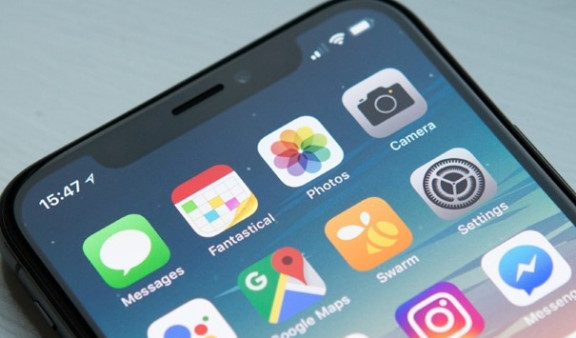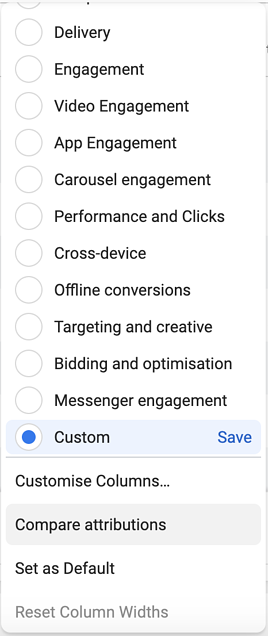
3 tips on how to tackle IOS14
With the release of iOS 14, the number of events monitored for Facebook ads is likely to change significantly.

Do you recognize this pop up?
With Apple's rollout of iOS 14, we can expect a big difference in the number of reported events linked to Facebook advertising. Apple will require user approval to allow Facebook to track activity in various apps and websites, which of course will affect you as an advertiser. The question is how much it will affect you and what you can do about it? One thing we can be sure of is that we will all be affected and now it is time to roll up our sleeves and start positioning ourselves in the best possible way.

How you as an advertiser will be affected
1. Delayed data
Until now, advertisers have more or less been able to follow ad reporting in real time, something that will no longer be possible. You can expect to wait up to a full 3 days before you can receive a report on how your ad has performed.
2. No support for breakdowns
You will not be able to break down your campaigns into delivery - and actions such as age, gender, region and placements.
3. A maximum of 8 events
Advertisers will be limited to 8 events per domain. In addition, these will be ranked in a certain order of priority when it comes to reporting. In what way, you are probably wondering? Let's say you measure both items that have been placed in a shopping cart and purchases in your 8 events. If a visitor enters your site, adds a product to the shopping cart and then completes the purchase, only the latter event would be registered - ie a purchase. This will be based on a priority order of your events.
4. Default attribution window - 7 day clicks 1 day view
In the future, 28-day click attribution windows, 28-day impressions, and 7-day impressions will not be supported for active campaigns. This means that your default attribution at this time will be 7-day clicks and 1-day impressions. This will affect how your results are displayed and I would therefore urge you to continue reading a little extra about how we advertisers can best prepare for this …
3 important preparations (and a bonus)
1. Select 8 events
Facebook will automatically select the 8 events that they think are most relevant to your business. The rest (in case you have more) will be inactive and you will not be able to select these as campaign targets. Go to the Events manager and prioritize the events that are most important to you if you have more than 8 events.
2. Verify your domain!
If you use a Facebook pixel for your site (which you should do) you may need to verify your domain.
3. Compare attribution models
One important thing you can do to prepare is to compare your attribution models to see how many occur after your 7 day period. Of course, this is something that will affect differently, depending on whether you sell more impulse-driven products / services or something that requires you to make a bigger decision. If we compare a purchase of a new hygiene product and a car, there is, for example, a time frame within when our decision is made and when we are ready to carry out the purchase itself. If we assume that few buyers make impulsive car purchases. In order to take a look at this, go to your Ads manager, select columns and press compare attributions to bring up available windows. Click on 1 day, 7 days and 28 days.


In the above case, it was thus (sorry about the Swedish numbers in one of the images, but the numbers are the same ?):
Attribution for viewing
- 1 day: 14 purchases
Click attribution
- 1 day: 19
- 7 days: 21
- 28 days: 25
In total, this means 39 conversions (25 clicks + 14 impressions). Note that included in 28 days is also 1- and 7-day clicks, which means that you need to count 28 days - 7 days to find out the result, ie how many occurred after 7 days. This is how it looks:
- 1 day viewing: 14 purchases
- 1 day click: 19 purchases
- 7 day click: 2 purchases
- 28 day click: 4 purchases
With this new standard from Facebook (7 days click + 1 day view), we will in this campaign see 4 less purchases than we had done with the previous default setting of 28 days click + 1 day view. So with that said, how many of your conversions will fall outside of this 7 day period depends largely on the type of product / service you are marketing. However, it can be helpful to know approximately how much of your conversions have historically occurred at a time later than 7 days after they clicked on one of your ads.
4. Bonus tip: Make no hasty decisions!
We are relatively used to making quick decisions because we have been able to see campaign results in real time. As we can no longer do that (it can take up to 3 days), we will need to give our campaigns more time before we assess the results and make any adjustments.
My tip: Feel free to let your campaigns run for 1 week before you evaluate the performance.
Time will tell
It is still too early to say what the outcome will be of all these changes. There are of course more things to consider, such as how our target groups will be affected, but at the moment I have chosen to highlight the above parts.